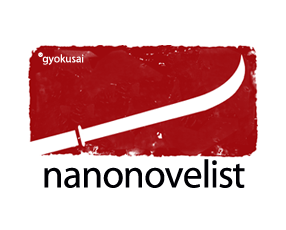Well it isn’t quite the idea I started out with for my next nanonovel, an experience that’s rather new to me, even if some basic features have been retained. Instead of an epistolary nanonovel, please welcome now a science fiction nanoromance:
Published on Twitter. Enjoy!
Not so much science fiction but romance in a science fiction setting; not so much a nanonovel but a nanodrama in disguise: Antidroma features, in form and content, cross-overs in many different ways. For romance, meet two star-crossed lovers and their peculiar predicament—a predicament that seems puzzling at first, but becomes clearer as the plot progresses. For drama, see how these two lovers cope in the face of utter inevitability—and how they will not be swayed. Antidroma will make you want to read it twice at once: from cover to cover and back again. Prepare to be gripped.
Originally, I set out to write an epistolary nanonovel, but I didn’t want to set it against some tired historical backdrop or other. Instead, I wanted to set it against some tired future backdrop or other! Which raised an interesting question: why on earth would people in a possible future convey messages to each other, fall in love, and not meet and tell each other their innermost feelings in person? Of course, they could be separated by a thousand light years, for example. But to sketch a setting that would allow messages to travel over distances, but not people, or, alternatively, devise new & retrogressive social restraints to prevent my lovers from meeting up, that would have swallowed way too much space within the confines of a nanonovel. Not much would have been left for the letters. So I changed plans. The letters became dialogs, and the science fiction setting warped into a time-travel premise. I wrote a story once, actually, about a not-too-bright first person narrator who wakes up one day to find himself moving backwards in time. Next thing he does is walking into a bar, trying to have a drink, to hilarious effect. So I took this idea and adapted it to develop a nanoplot that was part romance, part drama. Antidroma “crosses” indeed into drama, and—certainly tongue-in-cheek—high modernist drama, at that. It doesn’t have any stage directions. The lovers do not have names. The lovers are not even gendered. It’s somewhat Beckettish, and also somewhat Finnegans-Wake-ish, in ways that will become clear when you read it.
 Antidroma by J. Martin (02/2009) is licensed under a Creative Commons Attribution-Noncommercial-No Derivative Works 4.0 International License.
Antidroma by J. Martin (02/2009) is licensed under a Creative Commons Attribution-Noncommercial-No Derivative Works 4.0 International License.
Published Nanonovels:
Ouroboros (2009)
Antidroma (2009)
Green Tape (2009)
Fabia Maxima, Consul & General (2008)
Note: To always have the latest nanonovel freshly delivered to your Internet device, you might also want to subscribe to twitter.com/nanonovelist.
Just in Case-Note: Everything about the form is less than serious—from the novels’ 140-characters format to their ridiculously long “blurbs” and “author’s notes,” respectively, it’s all postmodern flippancy. But the content, and the effort behind it, is serious indeed.
If you have something valuable to add or some interesting point to discuss, I’ll be looking forward to meeting you at Mastodon!

